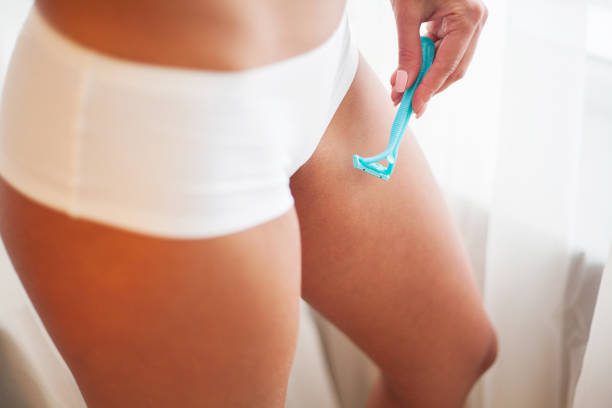This content is for informational and educational purposes only. Always consult a qualified healthcare provider.
Last Updated on October 29, 2025 by Grace Oluchi
The Ultimate Shaving Showdown: Wet vs. Dry
Shaving your vagina might seem like a straightforward task—grab a razor, go to town, and voila! But if you’ve ever actually attempted it, you know it’s more like navigating a jungle with a dull machete. One wrong move, and it’s razor burn city.
So, what’s better: wet shaving or dry shaving? Let’s break it down.
📋 Table of Contents
Wet Shaving: Smooth but Sneaky
Wet shaving is like the VIP spa treatment for your pubic area. It involves warm water, shaving cream, and a fresh razor—sounds fancy, right?
Pros of Wet Shaving
✅ Softens the hair – Warm water and steam open up the hair follicles, making it easier to cut.
✅ Hydrates the skin – Less friction means a smoother glide and reduced irritation.
✅ Less chance of razor burn – Proper lubrication prevents the blade from scraping the skin too harshly.
Cons of Wet Shaving
❌ Stray hairs & missed spots – If not done carefully, you might need a second round.
❌ Razor bumps still happen – Especially if you don’t exfoliate beforehand.
❌ Risk of nicks & cuts – The water can make the skin too soft, leading to accidental slices.
Dry Shaving: Quick but Risky
For those who want to skip the shower and go straight to action, dry shaving is an option. It involves shaving without water or shaving cream, usually with an electric trimmer or razor.
Pros of Dry Shaving
✅ Quick & convenient – No prep required, just grab a razor and go.
✅ Gives a closer shave – Can remove hair at the base for a super-smooth finish.
✅ Ideal for touch-ups – If you missed a spot, dry shaving can fix it fast.
Cons of Dry Shaving
❌ Higher chance of irritation – Without moisture, the blade drags more on the skin.
❌ Risk of redness & razor burn – Especially if your skin is sensitive.
❌ Ingrown hairs galore – Dry shaving can cause sharp hair regrowth that curls back into the skin.
Dermatologist Insights: Which is Really Better?
According to dermatologists, wet shaving is generally safer for sensitive areas. It reduces the risk of razor bumps, irritation, and ingrown hairs. However, if you’re in a rush and need a touch-up, dry shaving with an electric razor might work—just follow up with moisturizer to calm the skin.
The Best of Both Worlds: How to Shave Safely
No matter your method, follow these tips for the best shaving experience:
Pre-Shave Prep:
- Exfoliate before shaving – Removes dead skin cells, reducing the risk of ingrown hairs.
- Use a clean, sharp razor – Dull blades = disaster.
- Trim first if needed – Long hairs? Trim before using a razor to avoid tugging.
Post-Shave Care:
- Moisturize immediately – Hydrates and soothes the skin.
- Avoid tight clothing – Friction can cause irritation.
- Skip harsh soaps – Fragranced soaps can mess with your skin’s pH.
Final Verdict: Wet or Dry?
If you have time, wet shaving is the way to go—it’s gentler, safer, and reduces irritation. If you’re in a rush, dry shaving with caution is an option, but expect a higher risk of razor burn. And of course, there’s always waxing, laser, or just embracing the au naturel look!
Common Questions About Shaving ‘Down There’
Can I shave my vagina every day?
Not recommended! Frequent shaving can cause irritation and razor burn. Try every 2-3 days instead.
How can I prevent razor bumps?
Exfoliate before shaving, use a sharp razor, and moisturize afterward. Avoid shaving against the grain if you have sensitive skin.
Is it better to wax instead of shave?
Waxing removes hair from the root, giving longer-lasting results, but it’s painful and can cause ingrown hairs. Shaving is painless (if done right) but needs more frequent touch-ups.

